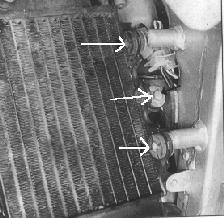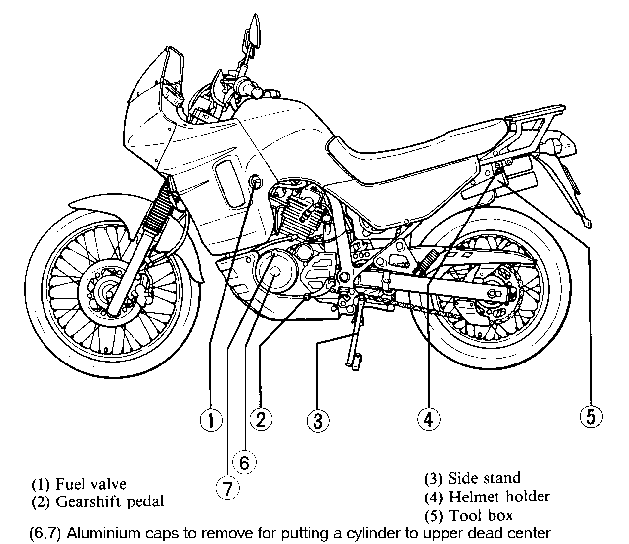 3 SW10 screws). Just loosen it,
do not remove the tubes.
3 SW10 screws). Just loosen it,
do not remove the tubes.Now there are two ways to do this job:
Be sure, that engine is cold (35 deg C max)! Heat will affect valve clearance!
Dismount all facings (except front facing), seat and tank. Remove the air dome
by detaching the clamps on both carburetors and the air cleaner housing. Loosen
the right radiator ( 3 SW10 screws). Just loosen it,
do not remove the tubes.
3 SW10 screws). Just loosen it,
do not remove the tubes.
Now there are two ways to do this job:

construction year '87-'88: 0.1 mm for both inlet and exhaust valves
construction year '89- : 0.15 mm for the inlet valves 0.20 mm for the exhaust valves
If not proper, loosen the sw10 nut, and with a pair of tongs or with a 4mm
wrench (if available) adjust the clearance by turning the square nut (CW: less,
CCW: more). The clearance
is correct, if you can move the gauge "with a light suck" between the valve and
the adjust screw. If you're not sure, try the next bigger gauge. If it slips,
adjust again. If it doesn't, leave the gap as is. Always remember: If in
doubt, rather leave the gap a little too big than a little too small. If it's
too small, you risk severe valve damage.
Fasten the sw10 nut and check again. If not proper, do it again.
Mount the caps and proceed with the other cylinder. When done, check the
idle mixture (coming soon),
and carburetor
synchronisation. Mount tank, seat and facings, clean your fingers, have a
test ride and have fun.
Lucky enough, you must do this job only every 12,000 km!